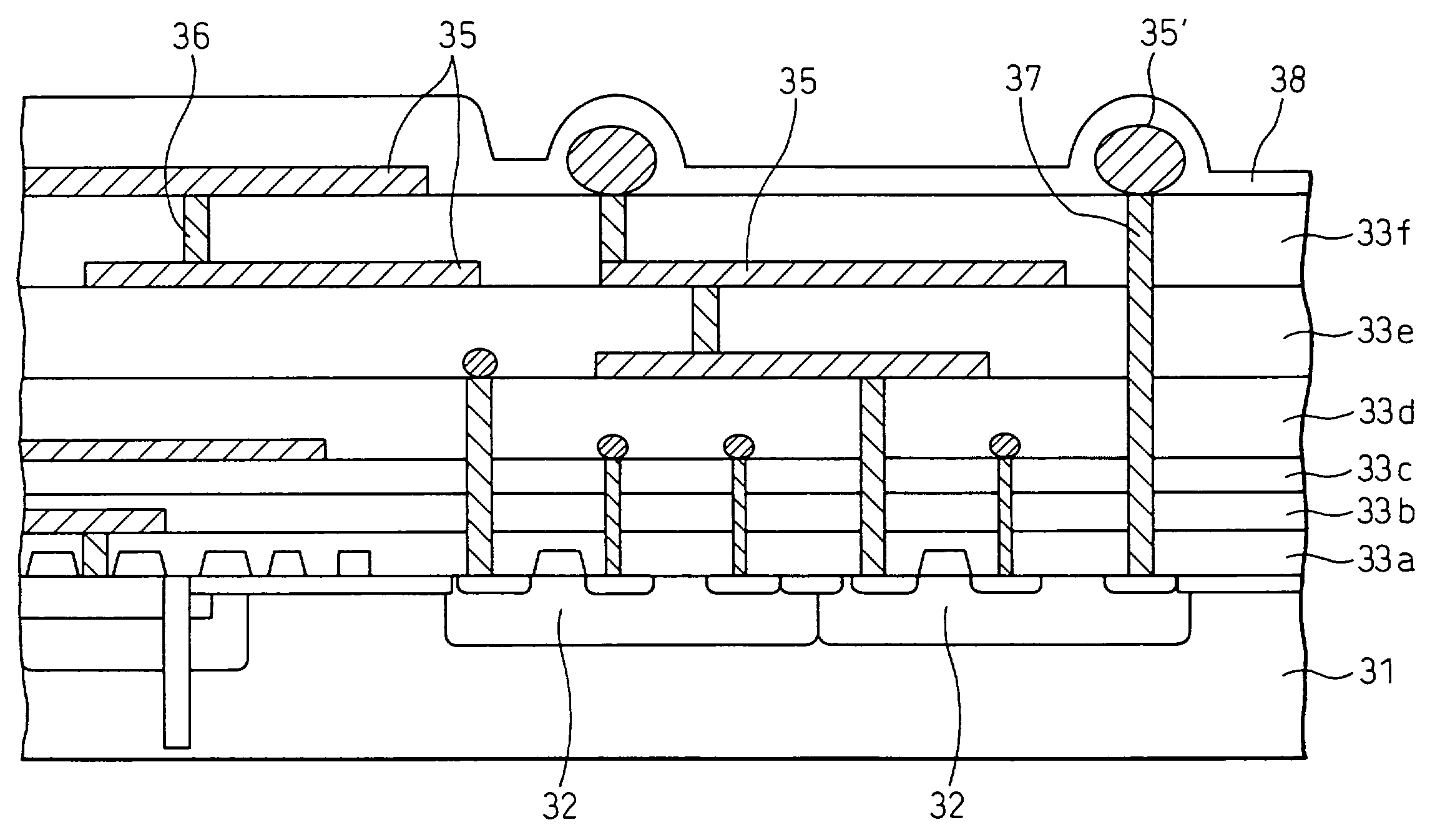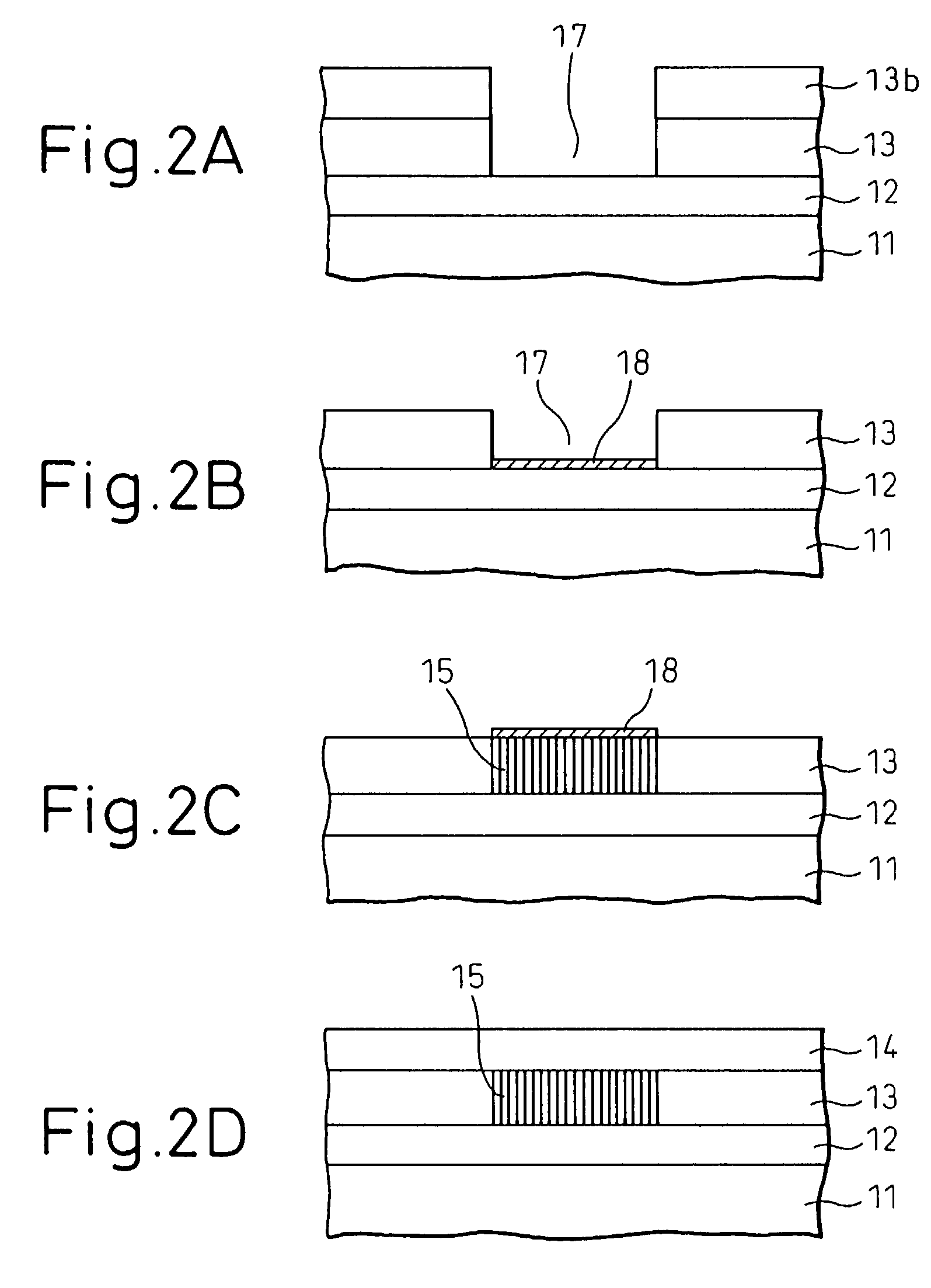Integrated circuit device and method of producing the same
- Summary
- Abstract
- Description
- Claims
- Application Information
AI Technical Summary
Benefits of technology
Problems solved by technology
Method used
Image
Examples
Embodiment Construction
[0071]In the invention, a cylindrical structure made up of carbon atoms, which is a nano-structure based on self-organizing, is used as a material for wiring lines or vias in an integrated circuit device. Such nano-structures include a nano-structure generally known as a carbon nanotube.
[0072]Carbon nanotube is a new carbon-based material, to which attention has recently been paid because of its unique properties. Carbon nanotube has a structure of a cylindrically rolled graphite sheet in which carbon atoms are arranged in the form of united six-membered rings through the strongest bond of sp2, the end of the tube being closed by several six-membered rings accompanied with five-membered rings. Carbon nanotube can have a fined diameter of down to the order of sub-nanometer, with the minimum diameter being 0.4 nanometer. The physical properties of this material are only now being studied, and it is known that the material has a coefficient of thermal conductivity greater than that of ...
PUM
 Login to View More
Login to View More Abstract
Description
Claims
Application Information
 Login to View More
Login to View More - R&D
- Intellectual Property
- Life Sciences
- Materials
- Tech Scout
- Unparalleled Data Quality
- Higher Quality Content
- 60% Fewer Hallucinations
Browse by: Latest US Patents, China's latest patents, Technical Efficacy Thesaurus, Application Domain, Technology Topic, Popular Technical Reports.
© 2025 PatSnap. All rights reserved.Legal|Privacy policy|Modern Slavery Act Transparency Statement|Sitemap|About US| Contact US: help@patsnap.com



